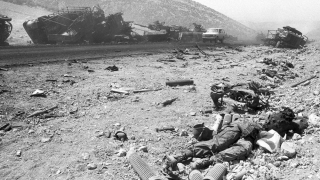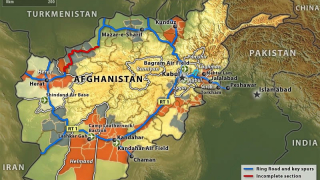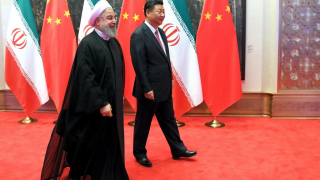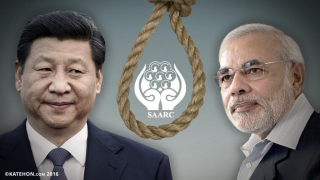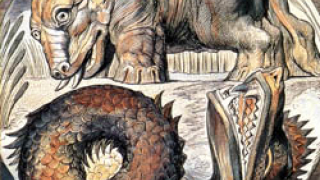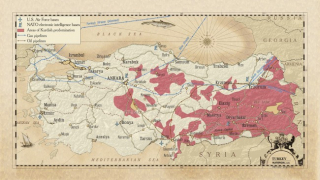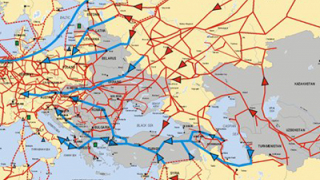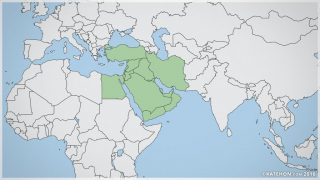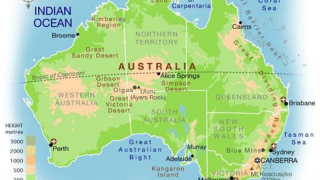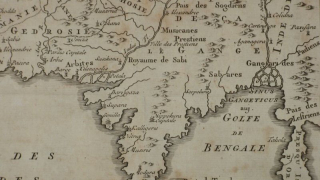The Neo Persian Empire
The strategic initiative on the complex Syrian battlefield seems to have swung in the favor of beleaguered President Bashar Al Assad. The Russian aerospace forces have played a key role in this change of fortunes. However, it is the regime forces on the frontlines which actually are responsible for gaining ground against western backed rebels and Islamic extremists.
It is no secret that the Syrian Arab Army suffered heavy losses both in men and material and the regime officials acknowledged the shortage of man power. Recent offensives launched by government forces, particularly the one to retake Aleppo and the recent Hama offensive suggest that this manpower dearth has been arrested. Foreign Shiite volunteers trained and armed by Iranian Revolutionary Guard Corps known simply as IRGC have turned the tide in Syrian civil war.
Since the Islamic Revolution of 1979, Iran suffered international isolation, fought 8 years long bloody war against Iraq and faced sanctions due to its ignominious nuclear program. Its economy was in shambles, infrastructure was dismal and it faces insurgencies waged by ethnic Kurds and Baloch.
USA and its major Middle Eastern ally, Israel, threatened an attack on Iran and it seemed to have been in an irreversible decline with a major threat to its national security.
Fast forward to 2017, Iran is successfully expanding its influence across the entire Middle East. The civil war in Syria and the rise of Islamic State allowed Iran to flex its muscles. The Iranian backed Iraqi Popular Mobilization Units (PMU) have stopped the lightening advance of IS and have reversed the gains of this brutal terrorist group which at one point threatened Baghdad. By virtue of these militias, Iran is now a major stake holder in Iraq’s future.
Direct involvement of Iran in Syria emboldened by the Russian military presence has also resulted in massive gains for its Syrian ally. For most of the time, the Syrian government forces were fighting an uneven struggle against rebel forces that benefited from better training, greater experience and most importantly better equipment provided by the Saudis, Qataris, USA and its NATO allies. But times have changed, thanks to the Iranian trained militia and the supply of the modern Russian material, it now has the capacity to win back the land it has lost.
According to Michael Eisenstadt, the Kahn fellow and director of the Military and Security Studies Program at the Washington Institute, “ All that can be said with confidence at this time is that Tehran’s strategy of using proxy warfare to manage risk and limit exposure in Syria has succeeded thus far”.
The irregular Shiite volunteers fighting in Syria on Iran’s behest belong from Pakistan, Afghanistan, Central Asia, Syria, Iraq and Lebanon. These volunteers will spread the Iranian official ideology in their home countries which will extend Iran’s influence far and wide.
Iranian proxies in Iraq and Syria have enabled it to counter the Saudi and American influence in Middle East. Iran has successfully entrenched itself in the Fertile Crescent, the term first coined by Jordanian King Abdullah II, and the fears of emerging Shiite land belt connecting Iran with Lebanon is ringing alarm bells in Riyadh, Tel Aviv and Washington.
Iranian backed Hezbollah, which defeated Israel in the 2006 summer war, is now emboldened and more confident than it was in 2006. The experience and modern weaponry it has acquired on the Syrian battlefield can be employed against Israel in any future conflict. Israel knows it and regularly targets weapons depots in Syria to deny the delivery of weapons to Hezbollah. However, in this incessant struggle between Israel and Hezbollah, Iran seems to be the ultimate beneficiary. The presence of Iranian forces in Syria in addition to Iranian backed Hezbollah in Lebanon can serve as an effective deterrence against Israeli pre-emptive strike on Iranian nuclear facilities.
The armed conflicts in Iraq and Syria have enhanced the defense capabilities of Iran. The relations between Russia and Iran have grown warmer since the P5 + 1 and Iran agreement signed in 2015. Moscow and Tehran signed a military agreement allowing Russian aerospace forces to station at Hamadan Airport in western Iran. Iran also received S 300 air-defense missile system which has added to Iranian defense capabilities.
Syria also signed an agreement with Iran giving it 5,000 hectares of land for farming, and 1,000 hectares of land for setting up oil and gas terminals, according to Iran’s state news agency IRNA. This deal would benefit IRGC which runs a powerful industrial empire in Iran.
Yemen is another theater of war where Iranian backed Houthi rebels have challenged the Saudi backed government. The affairs in this volatile country have distracted Saudi Arabia from events happening away in Syria and Iraq. Iran seems to have bogged Saudi Arabia down in Yemeni quagmire which is now a real threat to Saudi Arabia’s national security. Iran seems to have outsmarted Saudi Arabia in this Middle Eastern great game.
The hegemony of US and its GCC allies in Middle East has been challenged by emerging players in the global arena. The Russian renaissance is visible in Eastern Europe and Middle East. Iran has also capitalized on the vacuum crated as a result of US withdrawal from Iraq and its aftermath. A new order is emerging in this geo strategically important and resource rich region and Iran seems to be at the center of this new order.
Just as Safvaid dynasty had the arsenal and will to challenge its enemies, in the same way present day Iran has the ability to replicate that might under the present circumstances. Safvaid dynasty stood tall amongst its contemporary dynasties (Mughals n Ottomans) and played a critical role in speeding Shiism in the region. So one can conclude that the inception of neo Persian Empire under Iranian influence is on cards.


